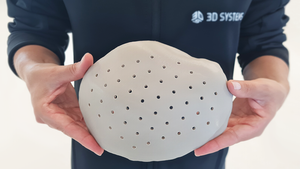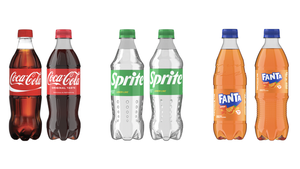March 1, 1997
|
Editor's note: Woody Woodrell is president of Woodrell Project Management, an injection molding consulting firm based in Anadarko, OK. You can reach him on the Internet at www.tanet.net/~woodrell/wpm . This column is his third in a series of troubleshooting articles. This month presents discussion of the second five of the 10 basic machine states. Discussion of the first five states appeared in the February 1997 issue
The 10 States of Molding
Clamp Close
Mold Protect
Clamp Lockup
Injection Forward
Injection Pack/Hold
Extruder Run/Cooling
Screw Decompression
Clamp Open-Slow
Clamp Open-Fast
Clamp Open-Slowdown
In the course of troubleshooting, it is very useful to break the machine's cycle down into basic states to quickly analyze the problem at hand and get our machines back on line. There are dozens of individual steps that take place in any cycle, but the purpose of this article is to compile those steps and break them down into 10 easily recognizable stages and a couple of auxiliary stages that are basic to all molding equipment.
This article assumes you currently run a normal cycle on either a toggle or standard hydraulic clamp with a single reciprocating screw; that is, without sprue break or nozzle valve function. References to cores are also left out due to the many different configurations that may be applied depending on the mold.
Machine State Five is completed, taking us to the sixth state.
Machine State Six: Extruder Run/Cooling
During this state the oil is directed to the extruder motor to turn the screw and "pump" material to the front of the barrel while mixing any additives into the melt to create a homogenous blend. I have simplified this process; a lot of newer screws have mixing heads, and the L/D ratio of the screw greatly determines the machine's capacity to accomplish this feat. The oil being directed is almost always volume controlled, not pressure controlled, to maintain the speed of recovery of the feed screw.
I'd like to discuss backpressure. A lot of people think it is produced by the machine; in reality it is developed by the screw acting as a pump. While the process builds up material in front of the screw tip, space for that material decreases, causing the melt to push back on the front of the screw. This pushing effect also moves the hydraulic injection ram(s) back since it is attached to the screw.
The amount of oil that is being pushed out of the inject forward side of the ram is reduced. The force on the front of the screw has to increase to overcome the pressure that builds up in the ram because the oil is not returning to the tank freely from the front of the injection ram. To increase the pressure on the front of the screw, the screw must "pump" the melt with more force, thus increasing the shearing effect on the resin. The pressure is typically controlled by the same main pressure relief valve that is used to control injection pressure. Older machines use separate pilot heads. Newer machines use an electronic pilot head to control the main relief head and send a signal proportional to the amount of the backpressure desired. Some newer machines use a separate backpressure relief valve. If you are reading 150 psi of backpressure and you have a typical 10:1 ratio of injection ram surface area to screw diameter surface area, then you have 1500 psi of plastic pressure pushing back on the screw. If you increase the backpressure to 200 psi, the screw has to have 2000 psi of force to counter it. Another thing to note is that the point from which the machine reads backpressure is typically the same point from which the machine reads injection pressure.
Also, while the screw is running and is going back, a vacuum is created at the front of the injection ram. This is typically filled with exhaust oil from the extruder motor. This is a curious circuit, since we often think of the hydraulic system as producing pressure. In this case, a vacuum is applied to draw the oil into the cylinder. Some cartridge valve machines use the vacuum pressure to open a 2:1 cartridge valve and allow oil to be pulled from the A to the B port to fill the void.
Machine State Seven: Screw Decompression
Once the shot size limit switch is reached, the screw stops spinning and a factory-set amount of oil pressure and volume is applied to the front of the injection rams. This pushes the screw back and reduces the pressure on the front of the screw to prevent drool when the mold opens. Another way to see this is to remember that if you have 150 psi of backpressure when the screw stops turning, you have 1500 psi of plastic pressure. Most of this material will go back across the tip to the flight area of the screw (remember, the screw tip is not seated at this time). But there is a considerable amount of pressure built up in front of the tip, or in the residence area, as some molders call it.
There are two ways this is typically controlled, either through time or distance. With the time-controlled method, a timer is started either at the point the shot size is made or when the cooling time expires, before the mold opens. The timer controls the duration that oil is applied to the decompression circuit. With the distance-controlled method the machine starts the decompression circuit as it does with time control, but brings the screw back to a preset limit.
Machine State Eight: Clamp Open - Slow
This state typically starts at the end of decompression and after the cooling timer has expired. The purpose during this state is to allow the mold to separate and the part to be transferred to the desired side of the mold. For example, most molds upon opening typically transfer the part to the core side from the cavity side.
On a hydraulic machine, the main ram area of the clamp is depressurized before the prefill valve is allowed to open. Once it has been sufficiently depressurized and the prefill is open, oil is applied to the open lands of the clamp ram at a preset flow and pressure to retract the ram. The oil from the booster tube area is directed to the tank. On a hydraulic machine with outrigger cylinders the oil is applied directly to the cylinders. There are not usually any open lands on a main ram that uses outrigger cylinders. On a toggle machine, the oil is applied to the crosshead cylinder to slowly retract the mechanical linkage. Oil from the close side of the cylinders is directed back to the tank at this time.
Machine State Nine: Clamp Open - Fast
The path of the oil to open the ram basically remains the same during this state. The exception is the increase of the volume of oil to an operator setpoint to increase the opening velocity of the clamp. Often a machine takes the oil from the close end of the ram and regenerates the energy into the volume of oil going to the opening lands; this increases the speed of clamp open. If you have a slow clamp, check your machine's prints to determine how this maximum speed is obtained. For instance, you may have a proportional directional valve to control the velocity of oil on clamp-open; and you may use a throttle valve to control the oil from the pump circuit itself. The throttle valve is typically wide open, letting you control speed with the proportional directional valve.
Machine State Ten: Clamp Open - Slowdown
The purpose of this state is to enable the clamp to slow down and stop at a precise position to allow a robot or other automated equipment to interface. It also prevents excessive shock when the mass of the moving platen and half of the mold stops suddenly. The path of oil, as in the two previous steps, remains basically the same with the exception of decreased oil volume and decreased speed. The oil regeneration used in State Nine is also decreased.
Auxiliary Machine States
The following are auxiliary states to keep an eye on.
Core circuits. If you are running cores, you probably set them at some point before the injection process started. Your process may require you to set them before clamp close, during clamp close, or after the clamp has fully closed.
Eject forward. If you are running cores, you have to pull them until the limit switch is made or the time has expired (if you are running a timed core sequence) before the control allows the eject forward sequence to start. The ejectors then go forward until the forward limit is met. This may happen any time after the clamp has opened and passed the minimum limit of clamp open stroke to allow operation of the ejectors.
Eject retract. When the ejectors reach the forward limits they retract until the retracted limit is met. Your machine may have a forward hold time. Your process may also have multiple ejects for the particular process you are running.
Insert molding. With an insert job, the machine retracts the ejectors and holds until the gate is opened and closed. At this time, the machine thinks you have placed the insert in the mold; some molds use a device that detects the insert and will not allow the machine to cycle if the insert is found missing. Also, the insert function is typically disabled if the machine is in automatic mode.
Understanding Your Presses
The following are steps I recommend you take to understand how and why your presses operate the way they do. The importance of recognizing these individual steps cannot be stressed enough. Once you understand how to break down these machine states on a sample machine, having a full understanding of its prints and circuits, you can quickly learn other machines as needed. When you are finished, training others to learn this method is easy. This process may seem time-consuming, but the time invested now could mean downtime prevented down the road. When you have a problem with your press, the amount of time needed to troubleshoot it will be minimized.
1. Pick a machine in your shop and get the prints to it. Go out to the machine and establish each of the machine states as reviewed above. Check your machine bar chart; it's probably already broken down into states. Familiarize yourself with all of the components used for each of the machine states. Duration: One day.
2. Take the hydraulic print and trace out each of the circuits. A neat trick is to make 10 copies of the hydraulic print and trace them out, one for each machine state. Your goal here is to be able to go directly to the components that drive a particular machine state. This includes knowing how each device is ported and tubed. Duration: Three to four days.
3. After you fully understand the machine hydraulically, turn to the electric prints and determine how each of the devices in the hydraulics are electrically driven. Your goal here should be to determine where the signal for the device originates and how it gets to the device. Duration: Two days.
During this self-training period, if you do not have a record of the normal LED operation of your controller, you should make one. Understanding the "Wake Up" and "Running" diagnostics of your controller is as important as knowing how to troubleshoot a machine that is running.
You May Also Like



